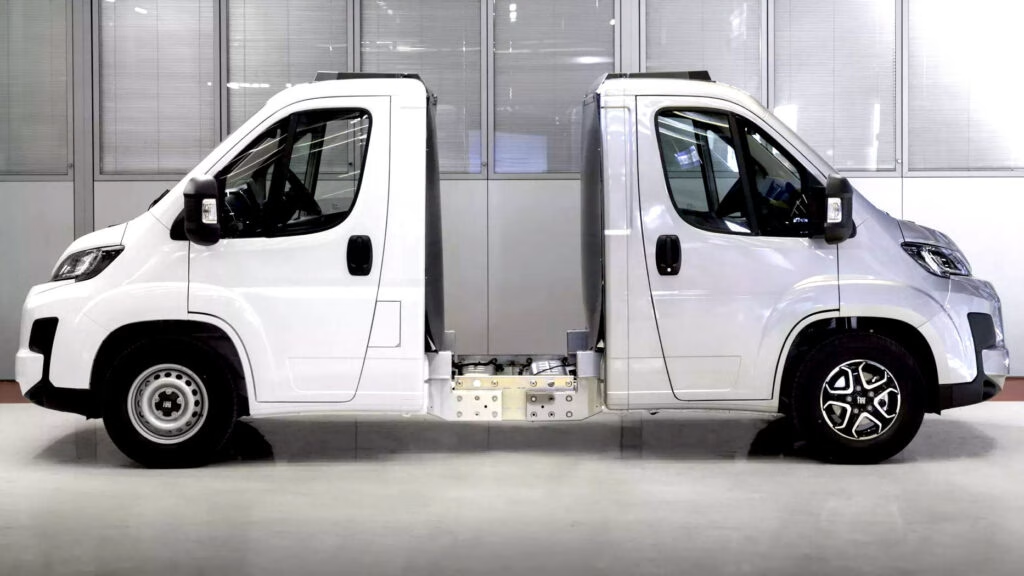Why Does the Fiat Ducato Back2Back Look Like a Two-Headed Van?
Spotting a Fiat Ducato Back2Back on the road is a bit like seeing a unicorn—if that unicorn had two faces and a very practical secret. At first glance, it looks like someone played a prank at the factory, welding two van cabins together nose-to-nose. But there’s real method behind the madness. The Back2Back is actually two separate Ducato cabs, temporarily joined for transport. This oddball setup isn’t just for show; it solves a genuine logistics headache for camper and motorhome builders.
Instead of shipping incomplete cabs separately (which would require special towing or awkward loading), Fiat simply bolts two front halves together. Each cabin keeps its own drivetrain, engine, and controls. Once they reach their destination, the pair is split apart, and each half becomes the starting point for a custom camper build. The result? Pure magic for anyone in the booming recreational vehicle (RV) market.
How Does This Oddball Transport Trick Actually Work?
Here’s where things get clever. The Back2Back configuration skips the rear chassis and axle, which would normally make these cabs a pain to move. By joining two front ends, Fiat creates a drivable unit—each half powered by its own 2.2-liter Multijet turbodiesel engine, pushing out 178 horsepower through an eight-speed automatic gearbox. Both cabs can technically drive, as long as the other is left in neutral. It’s a bit like a three-legged race, but with vans.
There’s no rule saying the two halves have to match. One might be white with steel wheels, the other silver with alloys. Underneath, both ride on all-season tires, ready for whatever the conversion process throws at them. This flexibility means converters can order exactly what they need for their customers—no wasted features, no unnecessary upgrades.
What Happens After Delivery—And Why Does It Matter for Camper Fans?
Once the Back2Back duo arrives at a conversion shop, the real transformation begins. Each cab is separated and mounted onto an AL-KO chassis with torsion bar suspension. This isn’t just a technical detail; it’s the foundation for some of the most comfortable, spacious campers on the road. The AL-KO frame supports up to 4.4 tons, offering a low, flat floor that’s perfect for elaborate, home-like interiors.
Standard features on these donor Ducatos aren’t exactly bare-bones, either. Think electric power steering, electronic stability control, hill start assist, cruise control, heated mirrors, and dual USB ports. Many buyers opt for the Captain’s Chairs, which swivel and slide to create a cozy dining or lounging area. Optional upgrades run the gamut from leather steering wheels to full infotainment systems—creature comforts that make a real difference on long journeys.
Why Is the Ducato So Popular Among Camper Builders?
The numbers tell the story: on German roads alone, the Ducato forms the backbone of over 427,000 motorhomes, grabbing a staggering 42.6 percent of the country’s RV market. That’s not just dominance—it’s a landslide. The reason? Flexibility, reliability, and a platform that’s easy for converters to work with. Whether you’re dreaming of a minimalist weekend escape pod or a rolling luxury apartment, the Ducato is up for the challenge.
Stellantis, the parent company behind Fiat, plans to showcase the Back2Back at Caravan Salon 2025 in Düsseldorf. This isn’t just a trade show stunt. It’s a signal to the industry that they’re listening to what converters and buyers want: smarter, more efficient ways to get high-quality campers on the road.
Are Other Vans Doing the Back2Back Thing Too?
Fiat isn’t alone in this quirky approach. The Back2Back option is also available on the Citroen Jumper and Peugeot Boxer—close siblings in the Stellantis family. These vans share most of their DNA, differing mainly in branding and a few design tweaks. Depending on the market, you might also see similar setups from Opel/Vauxhall Movano, Toyota ProAce Max, Iveco Super Jolly, or even the Ram ProMaster.
This cross-brand strategy means more converters can tap into the Back2Back system, regardless of their preferred badge. It’s a win-win: less hassle for manufacturers, more choice for buyers, and a nudge for the whole industry to keep innovating.
What’s the Real-World Impact for DIYers and Adventure Seekers?
If you’re eyeing a custom camper build, the Back2Back system might seem like a behind-the-scenes detail. But it’s actually a big deal. By making transport and conversion more efficient, Fiat and its partners help keep costs down and lead times short. That means more options on the market, faster delivery, and potentially lower prices for end customers.
Plus, the modular approach encourages creativity. Builders can start with a blank canvas, tailoring every inch to the buyer’s needs—whether that’s solar panels, smart storage, or a dog-friendly sleeping nook. The Back2Back trick is just one more way the van life movement is getting smarter, not just bigger.
The big takeaway? Innovation in the camper world isn’t about perfection—it’s about smarter adjustments. Start with one change this week, and you’ll likely spot the difference by month’s end.

